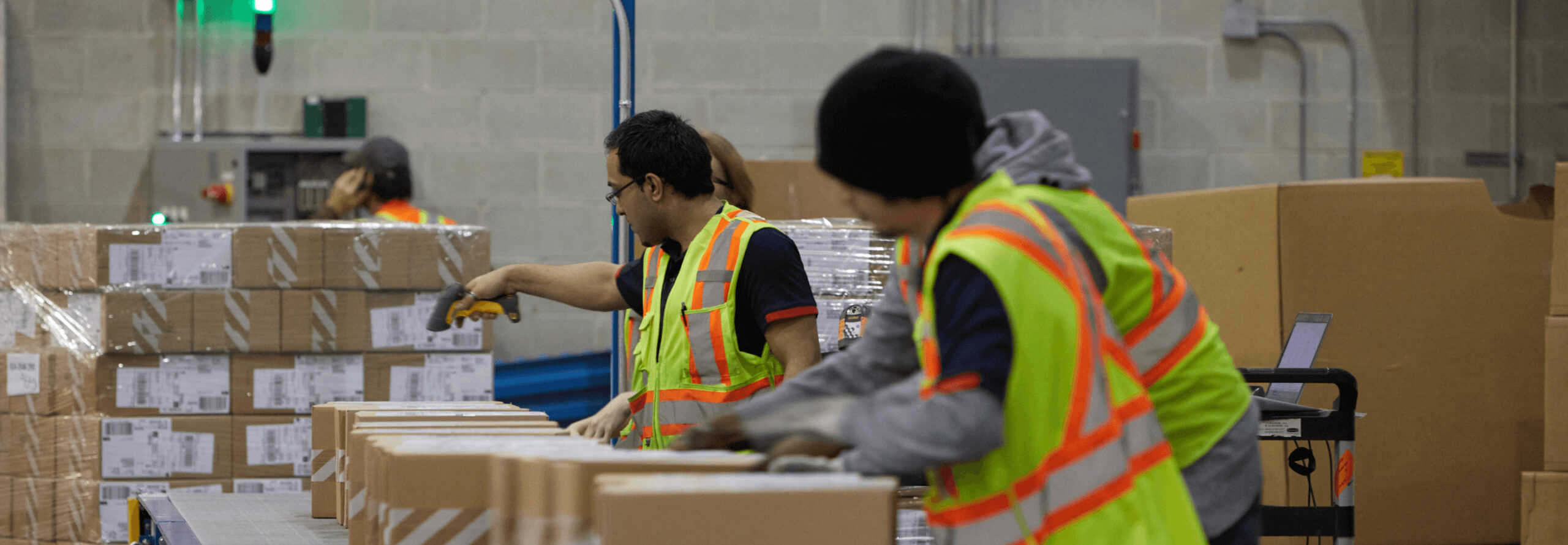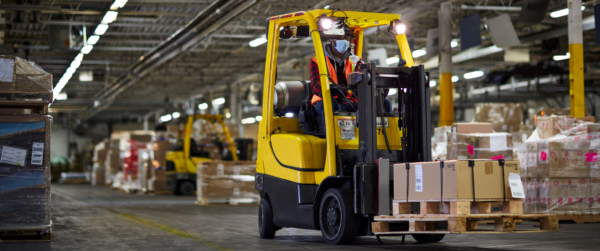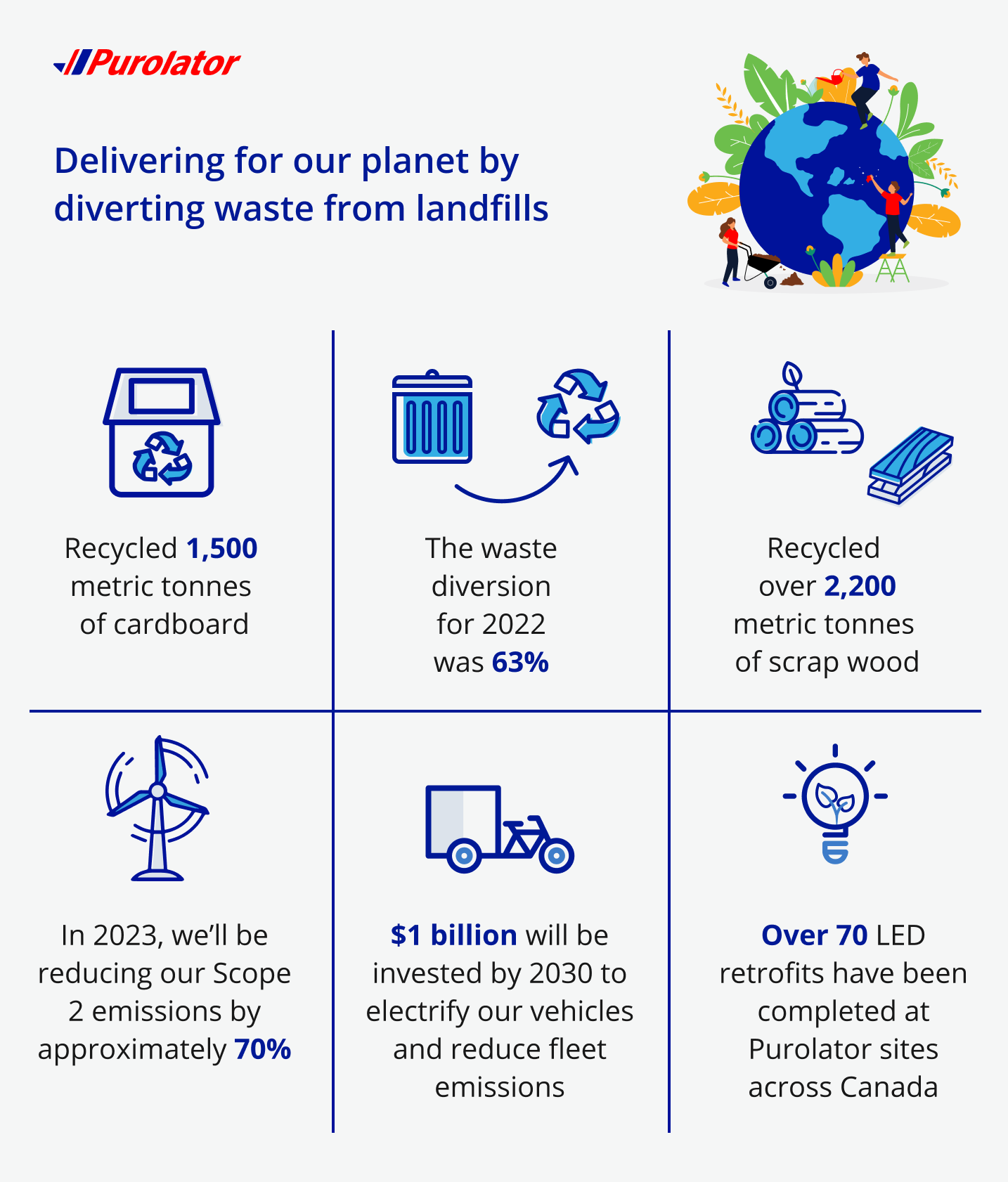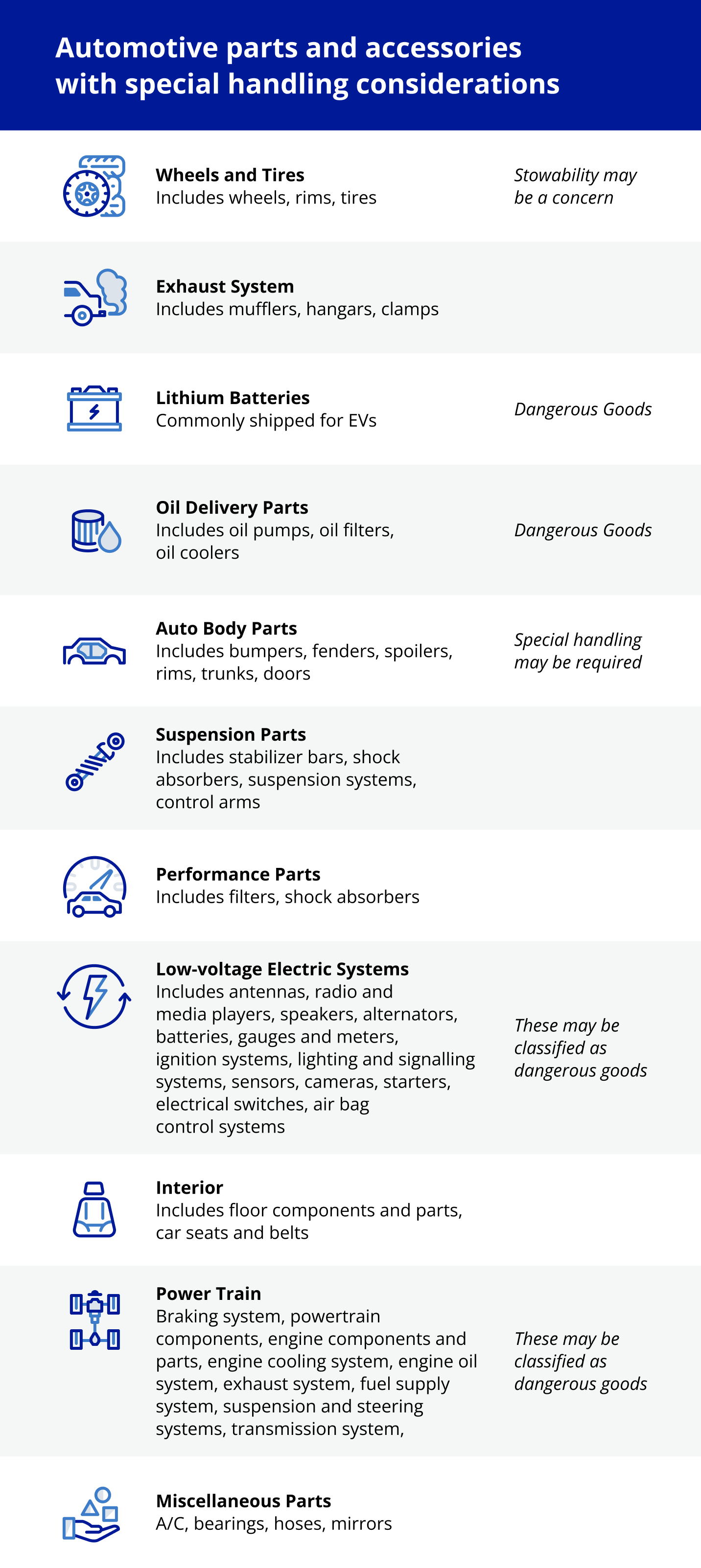Canada has been an automotive manufacturing nation for more than 110 years and plays a major role in the industry today. The auto sector is one of Canada’s largest industrial sectors, accounting for 10% of manufacturing GDP and 21% of manufacturing trade. However, automotive shippers face unique challenges right now.
Common challenges that auto parts merchants, manufacturers and suppliers face include supply chain disruptions, e-commerce competition, changing consumer behaviour and needs as well as inventory management and labour shortages. Our checklist below is a great tool to help you prepare for the challenges of shipping automotive parts and stay ahead of them.
Key Takeaways
How automotive suppliers and merchants can overcome global supply chain challenges
Global supply chain disruptions can be unpredictable and have impacted every industry in one way or another. Disruptions are unavoidable due to world events and geopolitical uncertainty. However, businesses can reduce the impact of global supply chain disruptions by adjusting their supply chain to incorporate options like nearshoring or work with multiple local vendors and proactively managing their forecasting and inventory.
Here’s what you can do to support your automotive business while proactively managing global supply chain considerations:
- Nearshore to reduce dependence on overseas suppliers
Partnering with suppliers or manufacturers nearby allows your business to form strategic partnerships, save time, reduce costs and minimize operational challenges. With nearshoring, businesses are less susceptible to unpredictable global supply chain disruptions, and by sourcing from vendors nearby, you’re generally able to communicate more efficiently due to similar time zones. There can be drawbacks, depending on the country that the nearshore team is located in, such as higher production costs.
- Offshore to overseas markets with caution
Offshoring is an enticing option for businesses seeking to expand to new markets and reduce labour costs. By moving certain operations or processes to a location with lower labour costs, businesses can often save money while maintaining or improving productivity. However, there are certain risks to consider, including production delays, increased shipping costs and geopolitical instability.
- Diversify vendors to reduce dependence on a single supplier
Diversification can help vendors overcome the risks associated with offshoring. By having multiple vendors in a nearby region, businesses will experience fewer delays and have a range of partners they can work with in the face of production or shipping challenges. A supply chain that includes multiple vendors becomes more robust in the face of supply chain issues and can benefit your company by providing you options in what goods you select, the costs you pay, the timing of delivery and the quality of goods.
- Proactive forecasting and inventory management
Maintaining the right amount of inventory and your forecasting automotive supply chain can be a delicate balancing act. Disorganised stock or a lack of visibility into stock locations can lead to imbalances and productivity challenges. A robust system for inventory management gives businesses a deep understanding of market demands. Consider using regional shared warehouses, vendor-managed inventory, demand management, ERP systems and just-in-time (J.I.T.) delivery to control costs and align supply chain production to meet demand. Another way to avoid overstocked inventory is to diversify your supply chain by working with multiple vendors across different regions.
- Use customs clearance services for automotive suppliers
More than ever, automotive suppliers need a reliable cross-border logistics partner. When the North American Free Trade Agreement (NAFTA) was replaced by the United States-Mexico-Canada Agreement (USMCA), there were new changes to the documentation required for automotive parts shipments. Automotive suppliers require a number of documents to successfully and seamlessly ship parts across the border. Purolator can help you navigate border regulations and tariff classifications and guide you if you have questions when filling out required paperwork. Having the correct forms and documents will help you navigate customs with ease and avoid delays or issues at the border.
What You Need To Know When Shipping Industrial Parts Across the Border.
- Manage reverse logistics
In order to stay competitive, businesses require an effective reverse logistics solution. The right returns management solution builds brand loyalty and can help businesses save time and money while reducing environmental impacts and waste. Purolator helps businesses offer flexible and seamless returns with integrated reverse logistics infrastructure.
- Find expedited shipping solutions
Next-day express and Mission Critical solutions are vital to the manufacturing and automotive parts industries as they help avoid overproduction, which leads to unnecessary costs in production, resourcing and storage. Expedited shipping also helps avoid underproduction, and as a result, customers won’t have to wait due to a lack of supply. Purolator helps the automotive sector by offering multiple, flexible shipping services like express shipping and urgent shipping that are reliably shipped to their destination in the quickest time frame possible.
Learn how to master the challenges of automotive shipping and inventory management.
Inflation and labour shortages in the automotive industry
To shield their business from global supply chain disruptions, automotive manufacturers and merchants can benefit from reducing their dependence on foreign suppliers where possible. For example, OEMs of large automotive brands have taken steps to mitigate the impact of parts shortages and supply chain disruptions by proactively:
- Increasing the number of suppliers and sourcing a shipping partner that provides flexible and reliable shipping options and ports of entry. This allows for greater supply chain flexibility.
- Improving inbound supply visibility and providing customer ETAs using enhanced systems integration with suppliers.
- Updating air freight policy to avoid inventory shortages and customer backorders.
- Expanding their supplier base for certain fast-moving parts for key suppliers in the U.S. and Asia.
On top of parts shortages and supply chain disruptions, labour shortages are yet another challenge that businesses in the automotive industry are grappling with. Businesses can invest in innovative tech-based solutions to help them overcome labour shortages, attract new talent and optimize operations.
The following checklist will help guide your automotive manufacturing business to stay ahead of the labour shortage:
- Adopt technology and automate processes
Tech and AI can help your efficiency and productivity by optimizing assembly work and automating routine tasks. And robotics can make floor production tasks like joint welding and heavy lifting more efficient, freeing up your members to do work that requires more planning, foresight and human expertise.
- Implement 3D printing
For low-volume manufacturing and prototyping parts, 3D printing is an effective and on-demand solution to support a small team of designers and manufacturers.
Selling car parts and accessories in-person or online
Many consumers value the experience of receiving in-person assistance when shopping for auto parts. This is because a knowledgeable staff member can provide assurance that the exact part needed to match their vehicle is in stock.
Here’s how to stay competitive at your physical retail locations for your in-person customers:
- Be mindful of your location and store set-up
Choose a physical location for your store that is easily accessible to your target customers, preferably in an area with high automotive traffic or near automotive repair shops. - Ensure your staff are experts in their fields
Employ knowledgeable staff who can provide guidance and assistance to customers, answer questions and offer product recommendations based on customer needs. - Focus on great customer service
Offer excellent customer service by providing personalized assistance, ensuring quick service and handling customer inquiries and concerns efficiently. - Use local marketing tools
Promote your store through local advertising channels, such as print media, radio or community events, to reach potential customers in your area. Ensure that you’re on Google Maps as well, and focus on getting great customer reviews so more people can find you.
On the other hand, e-commerce has made the automotive market more competitive and it’s expected to continue growing significantly over the next few years. In this competitive landscape, auto parts merchants can still retain customers and even grow their businesses with the right strategies. Remember, your wide range of customers (from dealerships to car enthusiasts), have unique needs. If you can offer them good customer service, convenience and positive experiences, you can build a loyal base of customers that keep coming back. As a car part merchant, you’re in a unique position to fulfil their needs.
Here’s how to stay competitive as an automotive business in the e-commerce landscape:
- Offer a superior customer experience
Ensure that customers have a consistently positive and personalized experience across your entire supply chain when they shop with your automotive business. From ordering, shipping and delivery, you can show customers that you understand their unique needs and are ready to deliver. No matter how competitive or saturated the market gets, you’ll stand out with your excellent customer service.
- Optimize your website for your customers
Having a well-designed website can go a long way in ensuring a positive experience for your prospective and current customers. Ensure that your website is easy to navigate and has robust search filters to help a wide range of customers find exactly what they’re after.
- Provide a seamless checkout
Capture online sales by simplifying the checkout process, from searching for items, all the way to processing the payment. Consider offering guest checkout for first-time customers, using progress bars and simplifying the form fields by only asking for essential information and using autofill and validation to reduce errors.
Changing consumer expectations in the automotive industry
To remain competitive, auto parts merchants and suppliers must keep up with growing consumer interest in more sustainable options like hybrid and electric vehicles (EVs). Merchants and suppliers can improve their green practices with sustainable packaging, more efficient shipping routes, easy returns processes and by partnering with an eco-conscious logistics and shipping provider like Purolator. We’re making big strides to meet our goal of achieving net-zero emissions by 2030, including investing $1 billion CAD in our fleet electrification program and reducing our overall landfill waste by 22% in just one year.
- Offer green shipping options
By working with a shipping partner that’s focused on reducing their carbon footprint, businesses can benefit from the consumer shift towards sustainability. Consumers value eco-friendly solutions such as electric vehicle deliveries and green packaging options, and the right shipping provider can play a major role in helping businesses achieve their environmental sustainability goals.
- Package automotive parts sustainably
When shipping automotive parts, there are some best practices and challenges to be aware of. Automotive parts are often bulky, heavy, easily scratched, unevenly weighted and fragile—which makes packaging and shipping them all the more challenging. It’s important that you protect your goods before packaging, pick the right-sized box to prevent damage, seal boxes tightly and work with a courier that will handle your automotive parts packages with care. With over 60 years of experience, Purolator is a trusted shipping provider with expertise in packaging and shipping automotive parts. Our guide to packaging automotive parts offers even more details on this process.
- Offer a consistent and easy returns process
By working with a shipping provider that allows for smooth reverse logistics processing, you can help your customers manage returns more easily. This will go a long way in reducing your waste and supporting a green supply chain.
- Shipping and logistics
Establish efficient automotive shipping and fulfillment processes to ensure timely delivery of orders. Offer various shipping options, such as standard or expedited shipping, and provide tracking information to customers.
Shipping considerations for automotive parts
Every automotive part has different considerations when it comes to shipping, including special handling, its status as dangerous goods and its size, shape and density. Below we’ve classified auto parts and accessories, primarily for vehicles using combustible engines, as well as EV batteries.
Give your shipments the attention they deserve
Purolator services for auto parts merchants
When choosing a shipping and logistics partner, auto merchants should understand and be willing to cater to your business’ unique needs. They should offer electric vehicles for deliveries, have a sustainable sorting facility and provide eco-friendly packaging materials. And lastly, the right shipping partner should offer specialized shipping services like a 500 kg Exemption category, special handling services, cross-border expertise, dangerous goods shipping, expedited delivery solutions and sweep-the-dock capabilities.



